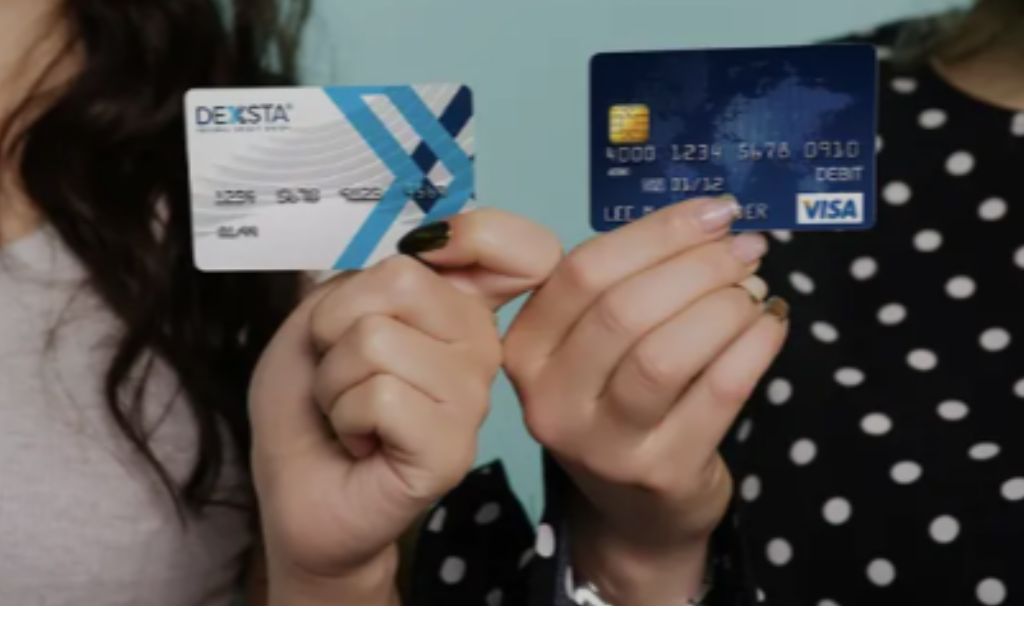Charge cards and pre-loaded cards are two famous monetary instruments that offer accommodation and security, yet they work in an unexpected way. Charge cards are connected straightforwardly to a financial records, permitting clients to get to reserves saved in that record. At the point when a buy is made utilizing a charge card, the assets are promptly deducted from the connected record. Then again, pre-loaded cards are not connected to a ledger; all things considered, clients load assets onto the card ahead of time. These assets can then be utilized for buys until the equilibrium is drained, so, all in all the card should be reloaded with additional assets.
One critical distinction among charge and pre-loaded cards is that check cards can frequently be utilized to get to cash from ATMs, while pre-loaded cards ordinarily don’t offer this element. Furthermore, since pre-loaded cards are not connected to a financial balance, they don’t need a credit check or banking history to get, making them open to people who may not meet all requirements for a customary charge card. The two kinds of cards offer advantages like comfort, security, and the capacity to make buys on the web and face to face. Notwithstanding, charge cards might offer extra advantages, for example, rewards programs or cashback motivations, contingent upon the bank or monetary foundation that gives the card. Pre-loaded cards, then again, can be a valuable planning instrument since clients can spend the assets that have been stacked onto the card, assisting with trying not to overspend or building obligation.
In synopsis, while both charge and pre-loaded cards offer comparative functionalities, they contrast in how assets are gotten to and made due. Check cards are straightforwardly connected to a ledger, while pre-loaded cards expect clients to stack assets onto the card ahead of time. Understanding these distinctions can assist people with picking the choice that best accommodates their monetary requirements and objectives.

While considering the distinctions and advantages between charge cards and pre-loaded cards, perceiving the different Sorts inside every category is significant:
Traditional Charge Cards:
Bank-gave Charge Cards: These cards are straightforwardly connected to a checking or investment account held at a bank or credit association. They give simple admittance to reserves stored in the related record.
Credit Association Charge Cards: Like bank-gave check cards yet presented by credit associations. They capability similarly, giving admittance to reserves held in the connected record.
Online Bank Charge Cards: A few internet based banks offer check cards for their clients, giving a similar usefulness as customary bank-gave cards yet frequently with added comfort and highlights related with web based financial stages.
Understudy Charge Cards: Planned explicitly for understudies, these cards might accompany advantages, for example, lower expenses, extraordinary prizes, or instructive assets to assist understudies with dealing with their funds.
Prepaid Cards:
Broadly useful Paid ahead of time Cards: These cards are generally accessible and can be utilized for different purposes, like making buys on the web and in stores. Clients load assets onto the card ahead of time, and spending is restricted to the prepaid equilibrium.
Travel Paid ahead of time Cards: Explicitly intended for movement, these cards might offer advantages, for example, unfamiliar exchange charge waivers, cash transformation administrations, and travel protection. They can be a helpful and secure method for overseeing funds while abroad.
Finance Paid ahead of time Cards: Bosses might give pre-loaded cards to representatives for getting compensation and getting to reserves. These cards take out the requirement for paper checks and can be more helpful for the two managers and workers.
Youngster Paid ahead of time Cards: Designated towards teens and their folks, these cards offer highlights like spending controls, planning devices, and parental observing abilities to show monetary obligation.
By understanding the various kinds of charge and pre-loaded cards accessible, people can pick the choice that best suits their monetary objectives, way of life, and inclinations. Whether it’s the immediate admittance to bank subsidizes given by conventional charge cards or the adaptability and control presented by pre-loaded cards, there are different choices to take special care of assorted needs.

Positively, we should dive further into the subtleties of every Trademark for both charge cards and pre-loaded cards:
Charge Cards:
Direct Connect to Bank Account:
Charge cards are given by banks or credit associations and are straightforwardly attached to the client’s checking or investment account.
Every exchange made with a charge card deducts reserves straightforwardly from the connected financial balance.
This immediate connection gives prompt admittance to the client’s accessible assets without the requirement for credit checks or preloading.
Access to Bank Funds:
Charge cardholders can get to the assets accessible in their connected ledger for different monetary exchanges.
They can make buys at retail locations, online shops, and eateries, as well as pull out cash from ATMs.
Reserves got to through a check card are commonly restricted to the accessible equilibrium in the connected financial balance.
Convenience of Banking Services:
Check cards offer something other than exchange capacities; they give admittance to a scope of banking administrations.
Clients can check their record adjusts, audit exchange narratives, move assets among records, and cover bills electronically.
Many banks likewise offer portable applications that permit clients to deal with their records and make exchanges from their cell phones.
Overdraft Protection:
Some charge cards accompany overdraft security highlights, which forestall exchanges that would overdraw the connected ledger.
Overdraft insurance assists clients with staying away from declined exchanges and exorbitant overdraft expenses by covering exchanges that surpass their accessible equilibrium.
Clients might pick into overdraft assurance, yet understanding the related charges and terms is fundamental.
Building Credit History:
Charge card exchanges don’t straightforwardly influence FICO ratings since they don’t include getting cash.
Be that as it may, capable utilization of a charge card, for example, keeping a positive equilibrium and overseeing funds carefully, can by implication add to laying out a positive monetary history.

Paid ahead of time Cards:
No Financial balance required:
Pre-loaded cards don’t expect clients to have a connected financial balance, making them open to people who are unbanked or under banked.
They are regularly given by monetary foundations, retailers, or installment processors and capability autonomously of conventional financial frameworks.
Loadable Funds:
Clients should stack assets onto a pre-loaded card prior to involving it for exchanges.
This stacking system includes moving cash onto the card either through direct store, cash reloads at retail stores, bank moves, or online exchanges.
Clients can burn through how much cash stacked onto the card, advancing planning and monetary discipline.
Budgeting and Control:
Pre-loaded cards are well known for the purpose of planning as they permit clients to restrict their spending to the prepaid equilibrium.
They are especially valuable for people who need to control their spending, keep away from obligation, or deal with their funds without the gamble of overdrawing reserves.
No Credit Checks:
Dissimilar to charge cards or Visas, pre-loaded cards commonly don’t need credit checks for endorsement.
This makes pre-loaded cards available to people with restricted financial record, unfortunate FICO ratings, or the individuals who don’t really want to have customary financial connections.
Security:
Pre-loaded cards offer a layer of safety as they are not straightforwardly connected to financial balances.
If there should be an occurrence of misfortune or burglary, clients are at lower chance of uncovering delicate financial data contrasted with conventional charge cards.
Furthermore, numerous pre-loaded cards accompany extortion security elements to shield against unapproved exchanges.
Understanding these subtleties assists people with settling on informed conclusions about which kind of card adjusts best to their monetary necessities, objectives, and conditions. Whether focusing on direct admittance to bank assets or looking for planning control and adaptability, both charge cards and pre-loaded cards offer unmistakable benefits and functionalities.
Conclusion:
All in all, understanding the distinctions and advantages between check cards and pre-loaded cards is fundamental for pursuing informed monetary choices. Here is a succinct synopsis:
Charge Cards:
Straightforwardly connected to a client’s ledger, offering quick admittance to reserves.
Give admittance to different financial administrations, including web based banking and bill installment.
Can be utilized for buys, ATM withdrawals, and different Exchanges.
May offer overdraft insurance and add to laying out a positive monetary history.
Reasonable for people with laid out financial connections who esteem accommodation and admittance to banking administrations.
Paid ahead of time Cards:
Try not to need a connected ledger, making them open to people without conventional financial connections.
Clients must preload assets onto the card prior to making buys or withdrawals.
Offer planning control and adaptability, assisting clients with overseeing spending and stay away from obligation.
Try not to normally require credit checks for endorsement, making them accessible to people with restricted or unfortunate financial record.
Give security benefits as they are not straightforwardly connected to ledgers, decreasing the gamble of openness to delicate financial data.
In picking between charge cards and pre-loaded cards, people ought to think about their monetary necessities, objectives, and conditions. Charge cards are reasonable for the people who worth direct admittance to bank reserves and the comfort of banking administrations, while pre-loaded cards are great for economical people who look for command over their spending without the requirement for a conventional financial balance. By understanding the qualifications and advantages of each sort of card, people can choose the choice that best lines up with their monetary inclinations and targets.
What is the primary difference between a debit card and a prepaid card?
The primary difference is that a debit card is directly linked to a user’s bank account, allowing immediate access to funds, while a prepaid card requires users to load funds onto the card before making purchases or withdrawals.
Why might someone choose a prepaid card over a debit card?
Someone might choose a prepaid card over a debit card for budgeting control and flexibility, as prepaid cards allow users to limit spending to the loaded balance without the risk of Overdrawing funds or incurring debt.





Leave a Reply